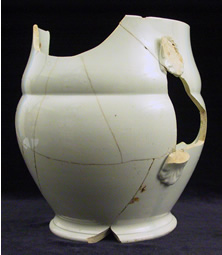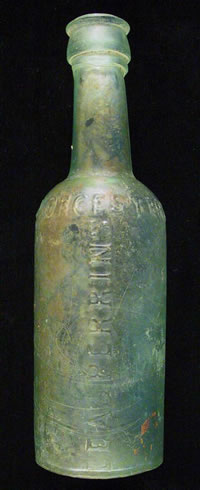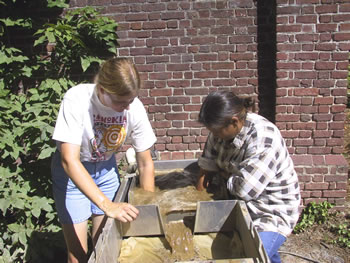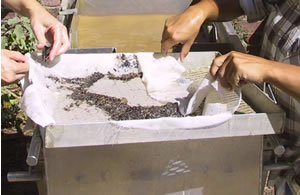September 9, 2002
 Today we will finish excavation of the large Civil War feature (Feature 8) discovered at the Prince Henry-Pelham property. We have had a small crew removing the remaining section for the last week or so. This should meet our present goals for that property.
Today we will finish excavation of the large Civil War feature (Feature 8) discovered at the Prince Henry-Pelham property. We have had a small crew removing the remaining section for the last week or so. This should meet our present goals for that property.
If anything, the results from Feature 8 have exceeded our expectations. This large rectangular pit has yielded a trove of significant information about the Civil War era at City Point. The remarkable contents of the pit are tangible links to the lives of occupying Union soldiers nearly 150 years ago. Archaeological study of the material stands to add considerable texture to what we know about the day to day existence of the common soldier, as well as the nature of military activity in this part of City Point.
 One of the more interesting recent finds in the feature is a Lea & Perrins Worcestershire sauce bottle. We imagine a good sauce made bland rations a whole lot more appealing! A good number of uniform buttons were recovered, too. Some still have traces of fabric attached to them. Aglets, or the brass eyes from shoes, were also found and some bore traces of leather. It seems as if a number of leftover clothing items were tossed into the pit when the army abandoned the area.
One of the more interesting recent finds in the feature is a Lea & Perrins Worcestershire sauce bottle. We imagine a good sauce made bland rations a whole lot more appealing! A good number of uniform buttons were recovered, too. Some still have traces of fabric attached to them. Aglets, or the brass eyes from shoes, were also found and some bore traces of leather. It seems as if a number of leftover clothing items were tossed into the pit when the army abandoned the area.
Copious amounts of animal bone were present in the feature. Most are from cows and bear the obvious traces of butchering – saw, knife, and axe marks. As the laboratory analysis proceeds, all the bones will be studied to gauge the quality of the diet that sustained these soldiers posted in enemy territory. Historical accounts remark on the facilities that the Union army established at City Point to feed the soldiers, including those on the front. Among them was an enormous abattoir compound. We will also use a process called flotation to separate small seeds and other plant remains from the feature soil. From these remains we can learn even more about diet and the local environment.
Presently we are still not completely certain of the purpose of this feature. Clearly at the end of its life it became a convenient dumping spot. More than likely, however, it was created as a below-floor storage space – like a small cellar – in a military building put up on the property in 1864-65. Who was using the building and for what purpose is not yet known.
Soon we hope to expand our explorations to another City Point property. The choice will be made in concert with city officials. Please revisit the project web site as new information is added periodically.


 Skip to main content
Skip to main content
